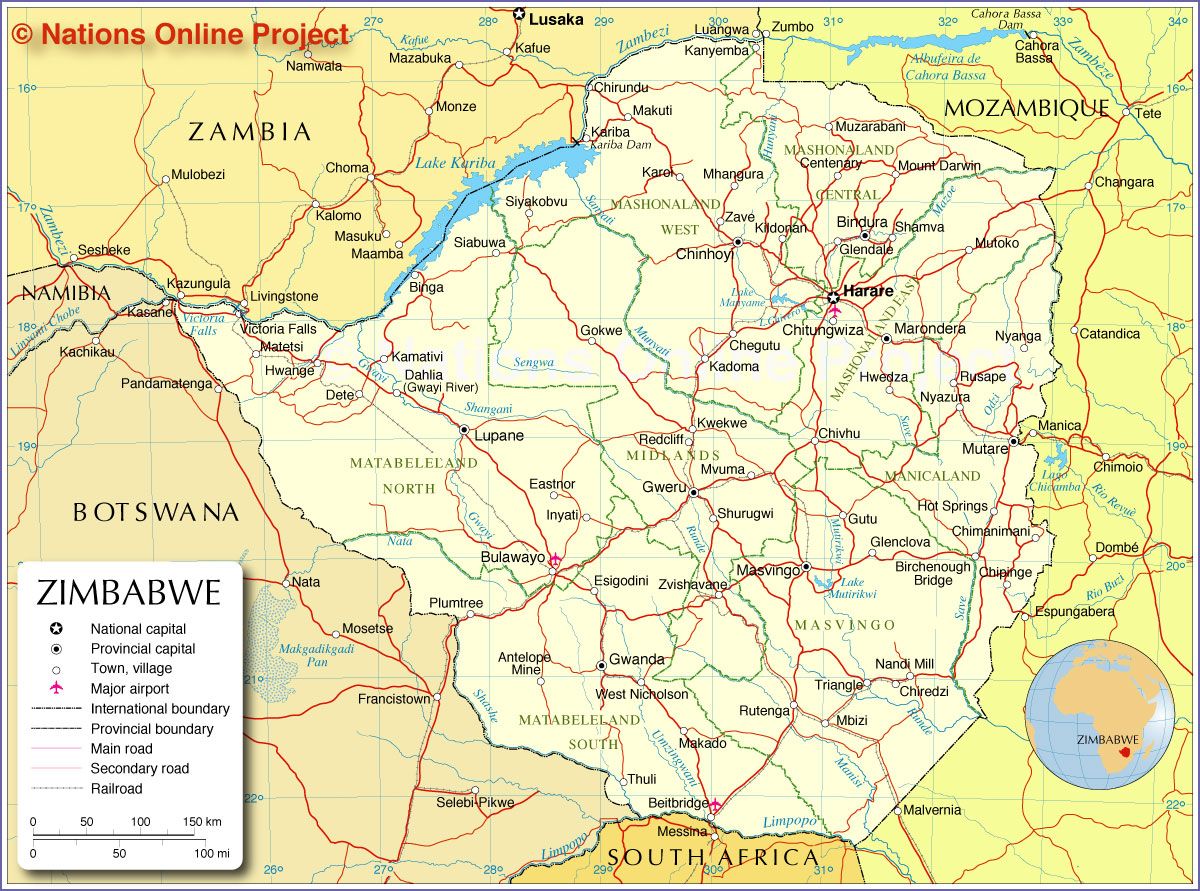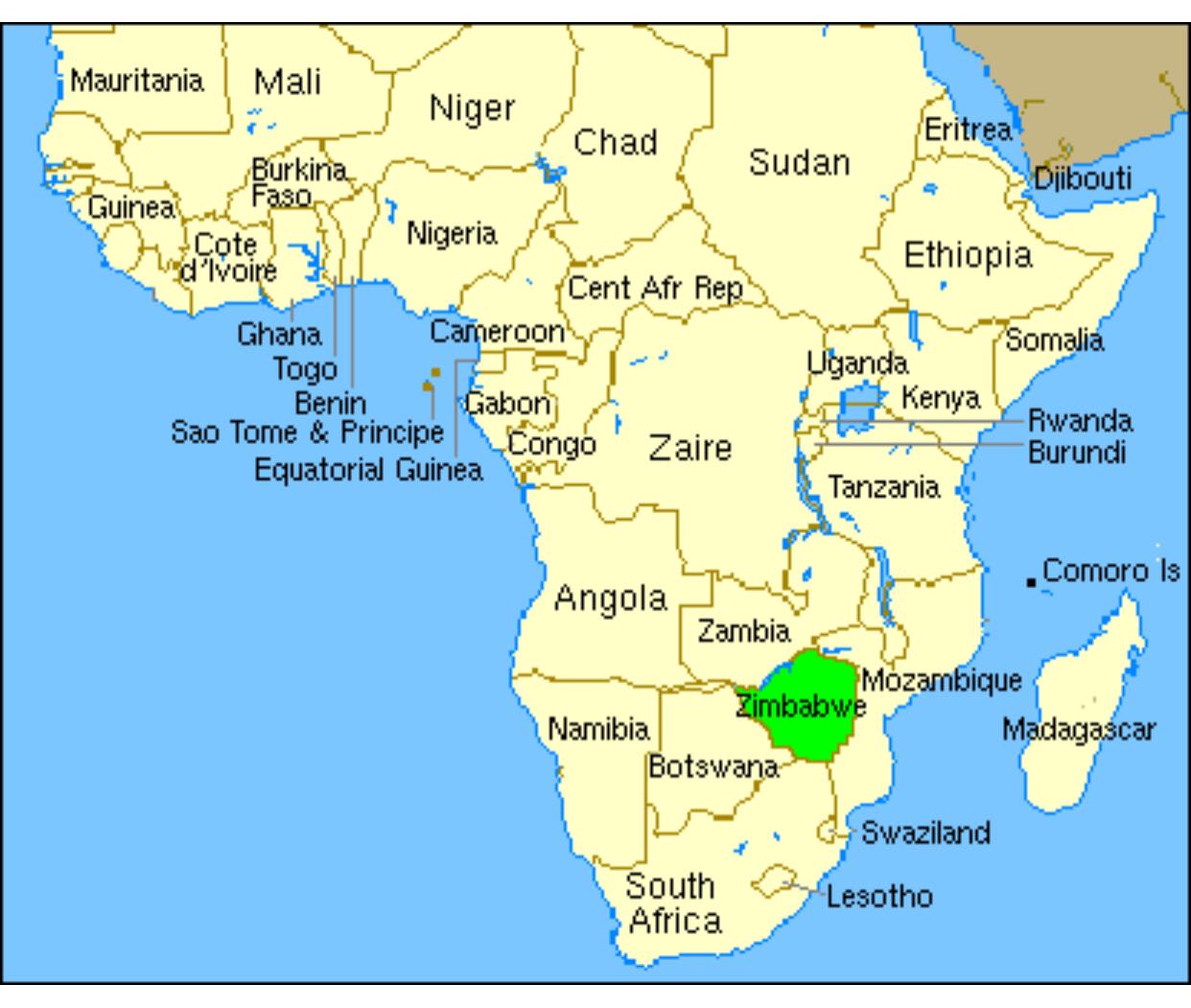The Maps of Zimbabwe
Quick Facts About Zimbabwe
Zimbabwe is a sovereign nation that gained independence in 1980. The country is a constitutional democracy whose governance is anchored on the Rule of Law, transparency, accountability, and zero tolerance for corruption. Under the able stewardship of H.E. Cde E. D. Mnangagwa, since 2017, Zimbabwe is pursuing Vision 2030, which strives to achieve Upper Middle-Income Status for its citizens, thus ensuring eradication of poverty, creation of common-wealth, and marching in tandem with the 4th Industrial Revolution.
Guided by the mantra, ‘Zimbabwe is open for business’, and the philosophy of innovative self-reliant advancement which leaves no one behind, the country calls upon both local and global citizens to come and partake in businesses across all sectors of the economy and with guarantees for peace and stability, you are invited to be part of the exciting irreversible transformation.
The country is located in southern Africa between the mighty Zambezi River, in the north, the 4th longest river in Africa, where the world’s largest waterfall, the Victoria Falls is located, and the Limpopo River to the south, which is famous for its freshwater crocodiles. Zimbabwe shares its borders with Zambia (north), South Africa (south), Mozambique (east), and Botswana (west). The nation adopted its name Zimbabwe in 1980 from the ancient capital, Dzimbabwe (house of stones) of the Munhumutapa Empire which thrived between 1450-1629, and 1803-1902. The ancient capital is now known as the Great Zimbabwe monuments. It has a total area of 386,850 sq. km (149,364 sq. miles). According to Zimstats, (2020), the country has a population of around 15 million, which is 0.19% of the world’s population. 38.49% of the population is urban Link to Zimstats. Zimbabwe’s capital is Harare and Bulawayo, is the second-largest city. The country has 16 official languages, with Shona, English, and Ndebele, the most common.
Zimbabwe enjoys a tropical climate with a dry season with almost no rain whatsoever from April to October, and a rainy season from November to March.
The country has a diversified economy which offers ample opportunities for backward and forward linkages across different sectors that include tourism, mining, agriculture, education, manufacturing, and information and communication technologies among others. Zimbabwe boasts of a highly advanced human capital skills base which also offers opportunities for the development of digital and knowledge-based industries, anchored on a well-developed private and public information communication technology (ICT) infrastructure network.
The country is one of the emerging economies in the Southern African Development Community (SADC) and the Common Market for Eastern and Southern Africa (COMESA) region with high agricultural prospects of becoming one of the major grain producers, and a hub for value-added exploitation of mineral and agricultural commodities. The country enjoys preferential market access to the regional (SADC, COMESA) and international community (ACP-EU) markets through bilateral and multilateral arrangements. Investing in Zimbabwe, as a centrally located country, therefore provides a regional gateway to SADC/COMESA and other markets.
Weather
December to March
Normally the rainy season with warm to hot days, mild to warm evenings. Light clothing and rainwear.
April and May
Mainly sunny, warm days with cool to cold evenings. Pack a jersey for the evenings.
June to August
Mild and sunny days, but can be distinctly cold in the evenings.
September
Pleasant sunny days. May need a light jersey for evenings.
October to December
Hot sunny days with high temperatures. Nights are warm. Light clothing.
Items to bring
Protection against the harsh African sun is advised, as well as khakhi, loose-fitting cool clothing, a hat and sunscreen. Comfortable hiking shoes are essential.
Transportation
FLIGHTS: Currently, domestic flights link the major cities of Harare and Bulawayo and the key tourist towns of Victoria Falls and Hwange. Other tourist areas such as Kariba and Gonarezhou National Park, are linked by small tour operators.
ROADS: Excellent road network.
DOCUMENTATION: IDP (International Drivers Permit) is required and vehicle identification.
BUS: Services are provided in most parts of the country.
Telecommunications
Zimbabwe has three cellular network operators through which roaming facilities are available. If you wish to bring your cellular telephone along it is advisable to check with your local cellular provider as to whether or not they have roaming facilities in Zimbabwe. Pay as you go cards are also available from the cellular companies in Zimbabwe.
Offline Banking Hours
0800 – 1500 Monday to Friday.
0800 – 1130 Saturday.
Currency
Zimbabwe uses a multi-currency system. Many establishments accept the US$ or the local bond notes among other global currencies. For the official exchange rates, please check with the banks.
for more information visit the Reserve Bank of ZImbabwe websiteCredit Cards
International credit cards are accepted for transactions. Please check with your bank if you can use your ATM card in Zimbabwe.
Visa Information
To enter Zimbabwe, all you need is a valid passport, a return ticket to your country (or your next destination), sufficient evidence that you can buy one; and sufficient funds to cover your stay in the country. Visas can be obtained at any Zimbabwean Embassy across the globe or through the Department of Immigration website LEARN MORE
For all journalists visiting the country,they need to be accredited by the Department of Information and Publicity. Please contact the Zimbabwean Embassy or consulate in or near your country.
Shopping Hours
Monday to Friday 0800 to 1700hrs
Saturday 0800 to 1300hrs
A number of smaller shops, suburban supermarkets, and curios are open 24/7.



